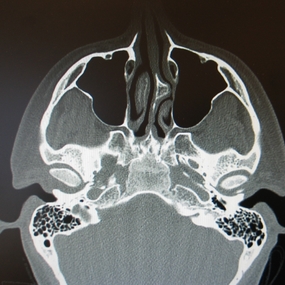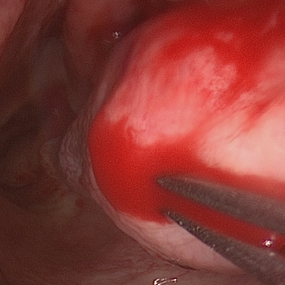NASAL SEPTUM and NASAL TURBINATES
Human anatomy explains the entanglement of these two elements of nasal pathology. The surgery indications depend primary on the complaints described by the patient – difficulty of nasal breathing, always on one side, or present intermittently on the right and on the left sides.
Nose endoscopy with making photos is very important as well.
The patient will be recommended to perform a CT-scan of para-nasal sinuses to appreciate the extent of nasal septum deviation, its nature (cartilaginous or osseous), its relationship with the middle nasal passages and the state of the inferior and middle nasal turbinates. In addition, it shows the state of nasal sinuses (presence of cysts etc.)

Septoplasty is performed under general anesthesia with intubation through the mouth. The surgery is done through a dissimulated incision. The surgeon will straighten the cartilaginous and the osseous parts of the septum passing through the mucosa and perichondrium which protect the nasal septum.
The surgeon will put 3 stiches, that you will not see later. A silicone split will be placed on each side of the septum. Nasal packing will be inserted into the nose on each side as well.
Nasal packing will be removed in 3 days after surgery. Silicone splints will be removed in 2 more days.
The surgery takes 1 hour.
Nasal turbinates – the inferior nasal turbinates are the most common reason of mucosa hypertrophy (vasomotor rhinitis). In this case, a procedure performed with the use of bipolar electrodes, diathermy of inferior nasal turbinates, is recommended.

The osseous structure of the turbinates is a rare reason of nasal obstruction.
-Sometimes the middle nasal turbinate is also hypertrophied (Concha Bullosa). Its requires surgical treatment under endoscopic control.
In both cases, the surgery can be done under general or local anesthesia. After surgery, nasal packing will be inserted into the nose for 24 hours.